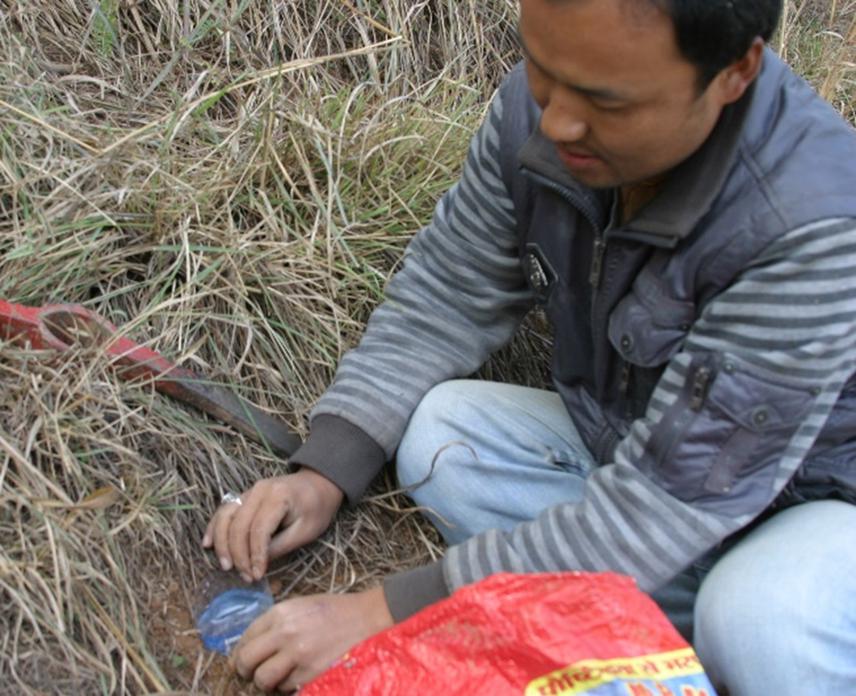Lekey Chaida
Bhutan is well recognised thorough out the world for its rich biodiversity, however, we lack the fundamental data on many flora and fauna where spider is not an exception. The project will determine the diversity of the spider in different habitats (Agriculture field, forest and houses); thus, for the first time, quantitative and qualitative data on spider diversity from the western part of Bhutan will be presented to the region and world.

Pitfall method of collecting spider sample from forest.
Bhutan is rich in biodiversity and well known for protecting natural environment all around the globe. Being among one of the ten Biodiversity hot spot in the world she is also inhabited by diverse species of organisms. Where spider is one of the little creature that is encountered everywhere in the natural ecosystem and manmade structures. However, very little or no concerns are shared by the people towards them. Conservation of species needs accurate knowledge on their distribution (Cardoso, 2009). Spiders, like other invertebrates, suffer a lack of attention from conservationists and the general public even in Bhutan like many other countries.
Spiders include a significant portion of the terrestrial arthropods diversity, being one of the dominant macro invertebrate predator groups in terrestrial environment (Edwards et al., 1976). They have an important role in regulating insect pests in the agricultural ecosystem as they are carnivorous predators and found almost in all habitat and exploit various niches (Wise, 1993). Spiders are good indicators of ecosystem health and natural control dynamics (Barlow et al., 2011).
With rapid development in the country natural environments are destroyed, fragmented, polluted, land use had changed leading biodiversity loss ultimately leading to extinction of species before knowing their existence. The reason for this project is currently there are very few literature available about spiders and no prior intensive studies had been carried out and published on the diversity of spiders in Bhutan; therefore a study is answer:
I. Determine species diversity of spiders in three different habitats (Forest, Agriculture land and Houses).
II. To find out the species richness and evenness of spiders.
III. To develop a checklist of spiders in the western Bhutan.
The Research will establish a new benchmark for the database to Bhutanese spiders and provide better platform to design appropriate conservation measures in the future.